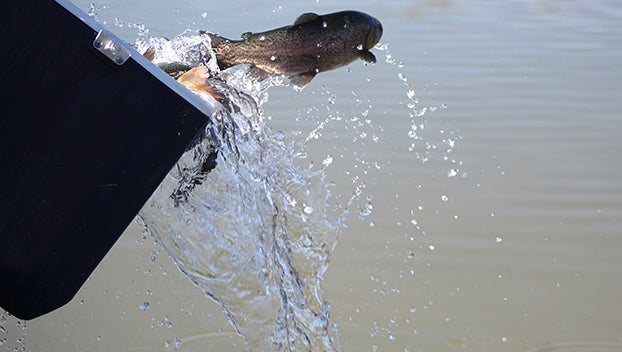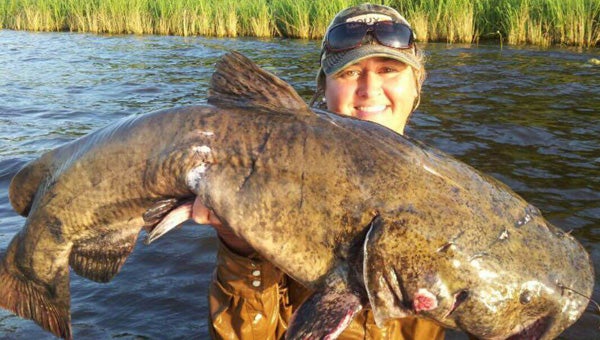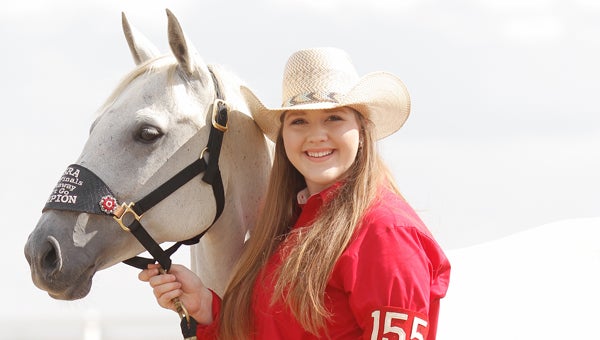Crisp turned taxidermy into his at-home profession in 2003
Published 12:01 am Sunday, September 15, 2013

Taxidermist Tucker Crisp stands in his trophy room at his house in the Kingston community Wednesday. (Justin Sellers / The Natchez Democrat)
NATCHEZ — Taxidermy can be seen as a weird and unusual career, but for Tucker Crisp, it’s a lifestyle.
Crisp grew up following his father around in Shreveport, La., and became an avid hunter just like him.
As he got older and moved to Natchez in 1978, the love of hunting moved with him.
In 1987, Crisp said he shot a buck that he wanted mounted, but instead of calling an expert, a close friend persuaded him to do it himself.
“My friends told me if I mess up, it’s not that big of a deal,” he said. “My first one was terrible, but you have to start somewhere.”
What started as a time-consuming hobby, turned into a full-time career for Crisp as he said he became more passionate about taxidermy.
“When I was doing this, it was just a hobby,” Crisp said. “But people started to inquire about it.”
Crisp decided to turn the hobby into a full-time job in 2003, when he opened a shop in his Kingston house.
Crisp said his wife, Donna, was not a big fan of him becoming a full-time taxidermist at first.
“When I tell people what I do for a living, you should see their eyes,” Crisp said. “They don’t expect it.”
But what people don’t realize is taxidermy is a strenuous and intricate profession, Crisp said.
“One deer mount takes about 12 hours to do, and takes about two weeks to dry,” he said.
Since 2003, Crisp said he has mounted about 2,500 deer, not including the ducks, squirrels, elks and bobcats he has also mounted.

Crisp uses a modeling tool to scrape paint off the glass eye of a deer in his workshop. (Justin Sellers / The Natchez Democrat)
Crisp said his family has gotten used to his profession in the past 10 years.
“My son (Tyler) is always trying to catch something big enough to mount,” he said.
Crisp said the most difficult animal he has ever had to mount was a turkey.
“There’s a lot of fat to get off of it,” Crisp said. “If you don’t, it’ll turn into grease.”
Crisp said there is a lengthy process that goes into mounting a deer head, but what most people are shocked to know is that much of a deer mount isn’t real.
“The only thing real is the hide and the antlers,” he said. “I put the hide on a model base like a sock, then I fit the (fake) eyes on it.”
The model base Crisp uses looks like a plastic horse head.
Crisp said getting the hide secured in every tight crevice of the model base is almost like surgery.
Once that is done, Crisp soaks the hide in a tanning solution and lets it dry for four days before painting the nose, eyes and ears.
A lot of mounts need paint to give the animal a more realistic look.
Crisp said the most difficult animal to paint is a Bass fish.
Though Crisp has mounted thousands of animals in his tenure, he said things don’t always go right.
“I look at it like farming, sometimes you have a good year (growing crops), and sometimes you have a slow year,” Crisp said.
Despite the hardships Crisp has gone through to continue his passion for taxidermy, he said it is something he can see himself doing for a long time.
“I’ll be doing it until I go to the ‘Happy Hunting Grounds,’” Crisp said.





